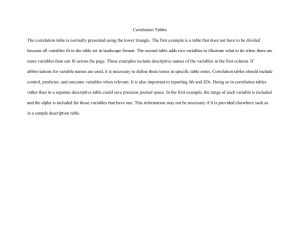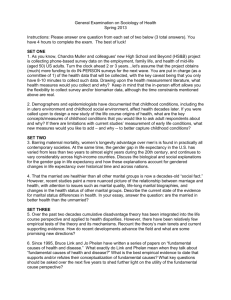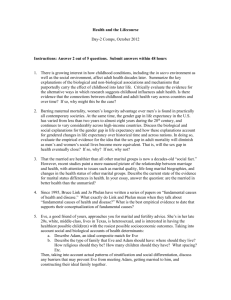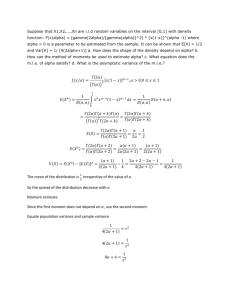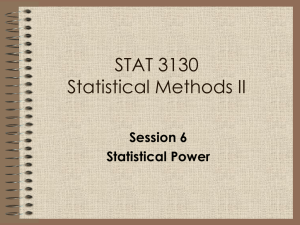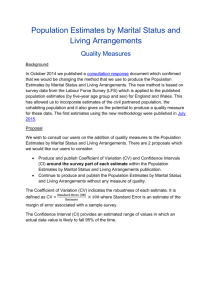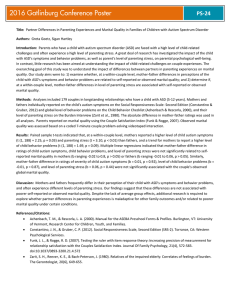Table 1
advertisement
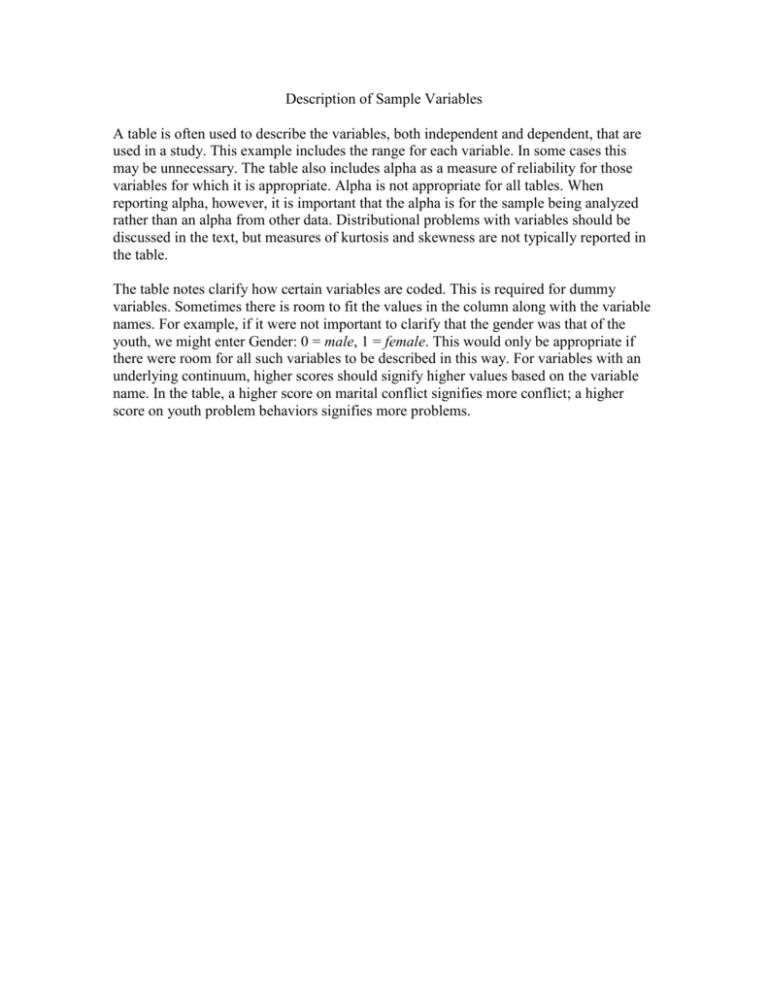
Description of Sample Variables A table is often used to describe the variables, both independent and dependent, that are used in a study. This example includes the range for each variable. In some cases this may be unnecessary. The table also includes alpha as a measure of reliability for those variables for which it is appropriate. Alpha is not appropriate for all tables. When reporting alpha, however, it is important that the alpha is for the sample being analyzed rather than an alpha from other data. Distributional problems with variables should be discussed in the text, but measures of kurtosis and skewness are not typically reported in the table. The table notes clarify how certain variables are coded. This is required for dummy variables. Sometimes there is room to fit the values in the column along with the variable names. For example, if it were not important to clarify that the gender was that of the youth, we might enter Gender: 0 = male, 1 = female. This would only be appropriate if there were room for all such variables to be described in this way. For variables with an underlying continuum, higher scores should signify higher values based on the variable name. In the table, a higher score on marital conflict signifies more conflict; a higher score on youth problem behaviors signifies more problems. Table 1 Youth Reports of Family Process Variables, Youth Demographic Variables, and Youth Problem Behaviors: Descriptive Statistics (N = 350) M SD Range Marital conflict 1.59 .57 14 .84 Marital role conflict 1.47 .66 14 .87 Father’s parenting quality 1.48 .45 13 .80 Mother’s parenting quality 1.61 .48 13 .80 Youth gendera .44 .50 01 Youth ageb .46 .50 01 Parent’s marital statusc .13 .33 01 Family economic hardshipd .13 .34 01 21.47 17.17 0 91 Variables Youth problem behaviors .94 a Youth gender: 0 = male, 1 = female. bYouth age: 0 = preadolescent, 1 = adolescent. c Parent’s marital status: 0 = married, 1 = divorced or separated. dFamily economic hardship: 0 = less poor, 1 = more poor.
